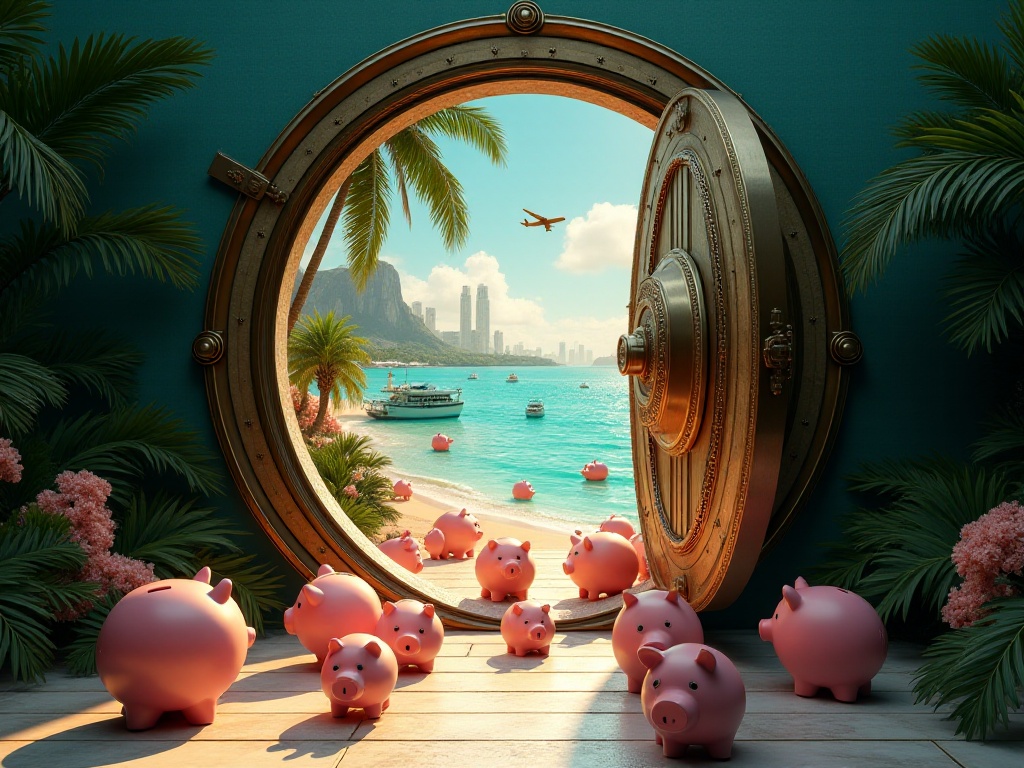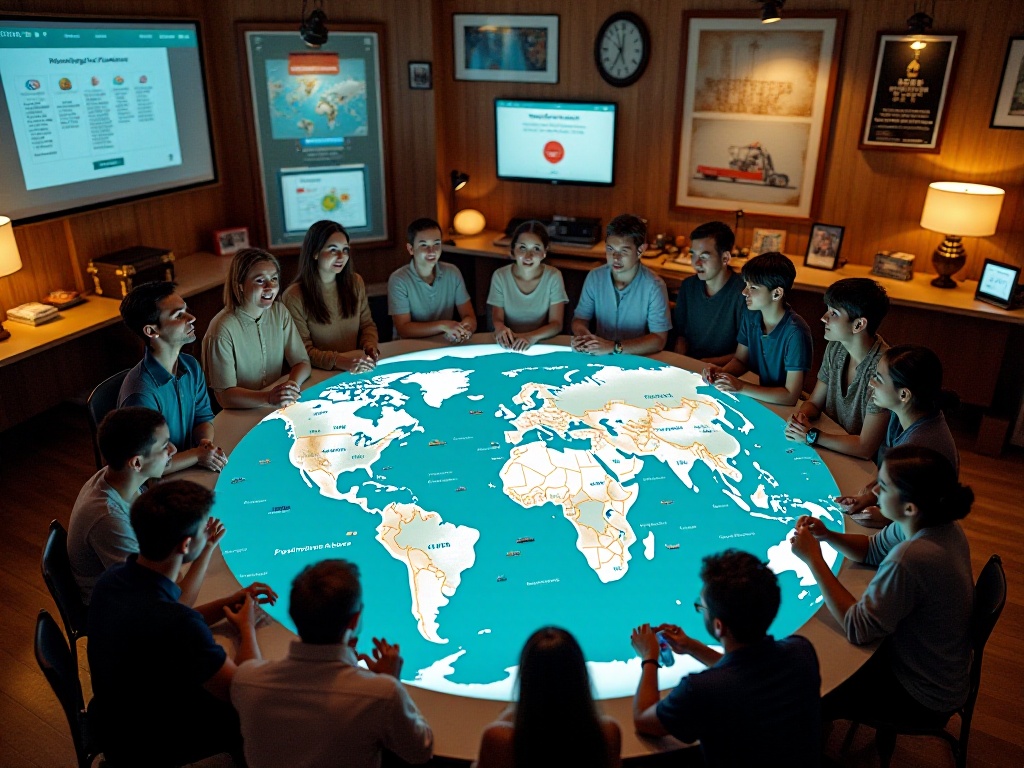Getting Straight to the Point
Scrolling through friends' European travel photos on social media, the romantic atmosphere and exotic scenery are truly captivating. Every time I see someone's selfie under the Eiffel Tower or a beautiful photo on a Venice gondola, I can't help but dream: how wonderful it would be if I could travel to Europe too! But when I think about the budget of tens of thousands, I've always hesitated.
However, after this personal experience, I can responsibly tell everyone: with proper research and careful planning, ¥20,000 is completely enough for an amazing two-week European trip! As an experienced travel blogger who has visited over a dozen countries, I want to share my money-saving secrets with everyone without reservation.
Major Expenses
When it comes to European travel expenses, the most challenging costs are airfare, accommodation, and major attraction tickets. Based on my personal experience, these three expenses accounted for about 60% of the total budget, around ¥12,000.
Airfare is the first expense to consider. I booked my May tickets in January, choosing Etihad Airways with a layover in Abu Dhabi. Although it meant spending an extra 6 hours on the connection, the ticket only cost ¥5,000, almost half the price of a direct flight! Keep in mind that for the same route, choosing a direct flight or traveling during peak season would easily cost over ¥10,000.
I used a small trick when booking flights: I set up price tracking on multiple flight comparison websites and monitored price trends daily. Finally, I managed to grab a special deal early Tuesday morning. Airlines typically offer discounted fares on Tuesdays and Wednesdays, so I suggest watching prices on these days.
For accommodation, I spent a total of ¥6,000. How did I save on this? I chose a mix of hostels and Airbnbs. In big cities like Paris, I stayed in centrally located hostels, in 4-bed dorms, for only ¥280 per night. Although shared, the environment was very clean, and I could meet travelers from around the world. Often we would chat and share travel experiences in the evening, which was particularly interesting!
In Florence and Rome, I stayed in Airbnbs. These were operated by locals and perfectly located near main attractions. The hosts were very enthusiastic and recommended food and attractions that only locals know about. The most expensive night was in Venice - accommodation on the island is naturally expensive during peak season, but since I booked three months in advance, it only cost ¥680.
I spent ¥1,000 on major activities. The Louvre ticket was ¥170. Tip: the Louvre offers free admission to all visitors on the first Sunday of each month - if your schedule allows, you can plan your visit for this day. For the Eiffel Tower, I chose the stairs ticket to the second floor, ¥200, much cheaper than taking the elevator to the top, plus it's good exercise!
The Vatican Museums guided tour cost ¥280, which was totally worth it. The guide explained the stories behind the Sistine Chapel frescoes in detail, giving me a deeper understanding of Michelangelo's art. The remaining budget went to other must-see attractions like the Palace of Versailles and the Uffizi Gallery.
Daily Expenses
Daily spending mainly covers food, transportation, and small activities. To be honest, on my first trip to Europe, I was particularly worried about exceeding the food budget. But this time I developed a set of money-saving strategies.
First, breakfast. I always had it at my accommodation. Hostels generally include breakfast with bread, jam, coffee, juice, and yogurt all available. When staying at Airbnbs, I would go to nearby supermarkets to buy bread, ham, and fruit to eat in my room. This not only saves money but also lets you experience local life.
For lunch, I usually found affordable fast food places. In Paris, many small restaurants offer lunch sets - a sandwich with a drink for about ¥40. In Italy, pizza slices and pasta are also very cheap, with lunch costing only ¥50. Sometimes when tired from walking, I would rest at McDonald's. European McDonald's is more expensive than in China, but the portions are filling.
I would splurge a bit more on dinner - after all, it's travel, and you should enjoy yourself sometimes. I usually found highly-rated but moderately priced restaurants on TripAdvisor. The most memorable was a small restaurant in Rome run by an elderly couple - their handmade pasta and tiramisu were absolutely amazing! Dinner cost ¥150, but it was definitely worth it.
Over two weeks, total food expenses were ¥2,800, slightly less than the budgeted ¥200 per day. Here's a tip: many restaurants mark "service not included," meaning you need to tip separately. In France, 5-10% tip is sufficient; in Italy, if the bill includes "coperto" (cover charge), no additional tip is needed.
For transportation, I mainly relied on public transit. In Paris, I bought a 5-day metro pass for unlimited subway and bus rides, much cheaper than single tickets. In Rome and Florence, I bought 72-hour passes. Venice's water bus tickets are expensive but offer views of both sides of the canals. Two weeks of transportation cost ¥700 total, averaging ¥50 per day.
Small activity expenses mainly included free walking tours (though you should tip the guide), and tickets to smaller museums. For example, in Paris, I joined a Montmartre art district walking tour led by an art student - I tipped ¥100; in Florence, I visited a leather workshop to observe their crafting process, and though there was no forced purchase, I was so impressed by their craftsmanship that I bought a small wallet. These small activities totaled ¥1,300.

Other Expenses
Besides these obvious expenses, there were some easily overlooked costs. First, the visa fee - using an agency to handle the Schengen visa cost ¥600. It would have been cheaper to apply directly at the embassy, but considering the amount of materials needed, I chose to use an agency.
I bought comprehensive travel insurance including medical coverage for ¥300. This is really non-negotiable - medical costs in Europe are very high, and without insurance, an illness or injury could easily break the budget.
Round-trip luggage fees totaled ¥400. A reminder here: many budget airlines have seemingly cheap tickets, but charge extra for checked baggage, and not cheaply. So when booking flights, always check if baggage is included.
Souvenir spending did exceed the budget at ¥1,000. I bought macarons and perfume in Paris, leather goods in Florence, and handmade glass decorations in Venice. Though over budget, these items are local specialties of good quality, suitable both as gifts and for personal use.

Smart Planning
Regarding budget planning, my advice is to prepare well in advance while maintaining some flexibility. Here's how I planned:
First, determine travel timing. Traveling in off-season can save a lot. Europe's peak season is July-August, when not only flights but also accommodation prices double. I chose early May, when the weather was warming up but not yet peak season, making prices relatively affordable.
Then, itinerary arrangement. I suggest not being too ambitious - better to spend time in 2-3 main cities, allowing deeper cultural experience while saving on transportation costs. This time I focused mainly on Paris and several major Italian cities. Though I didn't visit many places, I thoroughly enjoyed each one.
Start booking flights and accommodation three months ahead. Prices are generally reasonable then, with more choices available. But check cancellation policies carefully - some discount tickets don't allow date changes.
Reserve about 10% as flexible funds. Unexpected expenses or specially desired experiences may come up during travel. Having this flexible budget means less stress about going over budget.

Implementation Steps
Saving money is the first step in planning. My monthly salary is ¥8,000, after deducting ¥3,000 for rent and ¥2,000 for daily living expenses, I can save ¥3,000 monthly. Starting from last November, I saved ¥2,000 monthly in a dedicated travel account, accumulating ¥12,000 before departure. The remaining ¥8,000 was paid by credit card installments, ¥1,000 monthly for 8 months.
Researching destination cost levels is also important. Two months before departure, I started gathering information on Xiaohongshu, Mafengwo, and other platforms. I also joined several European travel chat groups with many local students who provided particularly useful price information.
For instance, I learned from these groups that Paris museums offer free admission on first Sundays; Venice gondolas can be shared with other tourists, costing only about ¥200 per person; many churches in Rome are free to visit, with decorations no less impressive than paid attractions.

Execution Management
During the saving phase, I kept travel funds in a separate account with automatic transfers set up. This prevented accidental spending of travel money elsewhere. I used China Merchants Bank's smart investment account, which earned some interest.
While traveling, I used the "Shark Finance" app to record every expense. It automatically converts currencies and categorizes expenses, helping me track budget execution in real-time. Every night before bed, I would review the day's expenses to check for any overspending.
Credit card points redemption was really worth it. I used last year's credit card points to redeem part of the airfare, saving nearly ¥1,000. But watch out for foreign transaction fees - I got a credit card specifically for Europe that waived these fees.
There are also some easily overlooked hidden charges. Some attractions charge extra for audio guides, usually 5-10 euros; some restaurants charge cover or service fees; some museum lockers require coins. These small expenses add up significantly, so it's important to understand them in advance.
Final Advice
My biggest realization from this trip is: saving money doesn't mean sacrificing experience. On the contrary, many money-saving choices can lead to more authentic experiences. Like meeting friends in hostels, buying ingredients from local markets to cook, joining free walking tours to learn city history - these are experiences money can't buy.
The most important aspect of budget travel is doing thorough advance research. Understand destination price levels, know where to spend and where to save. Learn to use various discount policies - student cards can get attraction ticket discounts, museum passes are cheaper than buying individual tickets.
Prepare a travel guide before departure, but don't pack the schedule too full. Leave some free time for unexpected delights. Like one afternoon in Venice, I was just wandering aimlessly through alleys and found a particularly quiet square where the café owner spoke Chinese - we chatted for a long time about Venice's history.
Finally, I want to say, don't give up on your travel dreams because of a limited budget. With careful planning, ¥20,000 can absolutely provide an unforgettable European journey. I hope my shared experience helps those preparing for European travel.
By the way, do you think a ¥20,000 budget for two weeks in Europe is reasonable? Welcome to share your thoughts in the comments.




